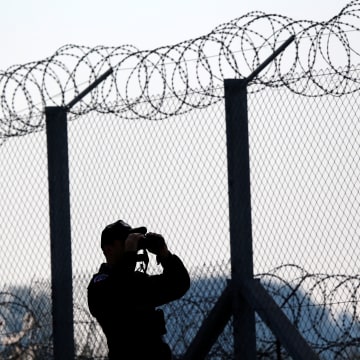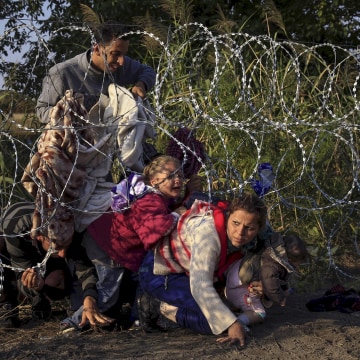CAN a bad man be a good president? The potential urgency of this question took Lexington on a cross-country pilgrimage to the Richard Nixon Presidential Library and Museum in Yorba Linda, California. The museum, which reopened in October after an expensive overhaul, attempts to weigh the flaws of the 37th president against his undoubted merits, starting with his intelligence, daunting capacity for work and a poker-player’s willingness to take calculated risks in geopolitics.
Much thought has gone into burnishing the reputation of the only president to resign the office. A new display for the selfie generation allows visitors to photograph themselves on the Great Wall of China next to a life-size Nixon cut-out, recalling his history-making visit in 1972. Little-known moments of physical courage are remembered. Carefully preserved bullets and glass fragments testify to a nearly fatal mob attack on his car while visiting Venezuela in 1958 as Dwight Eisenhower’s vice-president—the display explains how Nixon prevented a bloodbath by ordering his Secret Service agent to hold fire.
The museum hails Nixon for rallying a “silent majority” of Americans who felt ignored and disdained by bossy, self-dealing elites. Captions suggest that Nixon balanced a conservative’s wariness of big government with a pragmatist’s willingness to wield federal authority to heal chronic ills, whether that involved desegregating schools in the South to an extent that had eluded his Democratic predecessors or creating the Environmental Protection Agency to clean up rivers so polluted that they caught fire. This empathy for America’s forgotten, damaged places was all the more remarkable because—as the museum admits via filmed interviews with aides and family members—Nixon was a brooding introvert, “suspicious” to the point of paranoia.
The Watergate scandal that felled Nixon is presented in a side-gallery filled with sombre black, red and grey panels bearing labels like “Dirty Tricks and Political Espionage” and “Obstruction of Justice”. In the brightly lit main halls an elegant display explains how Nixon recorded White House conversations with hidden microphones, to preserve his presidency for posterity. An old-fashioned telephone plays such recordings as “Daddy, Do You Want to Go Out to Dinner?” a 1973 call from Nixon’s daughter, Julie. Walk a few yards into the Watergate gallery and the taped recordings are of the president growling about Jews in his government, snarling, “Generally speaking, you can’t trust the bastards.” Blazered volunteers earnestly describe Nixon’s strong and weak points. They work hard, with one guide spending long minutes explaining Maoist China to two youngsters perched on the canary-yellow sofas in a replica of his Oval Office from around 1969.
Alas for keepers of the Nixon flame, the museum—whose historical displays have become more candid over the years, notably when the complex became part of the official presidential library system in 2007—is too honest for its own good. The museum would like visitors to judge Nixon the man, which is why it includes a sculpture of a favourite dog curled up in an armchair and tours of the modest cottage where he was born, back when Yorba Linda was a rural backwater. But it ends up telling a story larger than any one individual. It reveals how close America’s ship of state came to being wrecked by a particularly lethal sort of bad leader: one guided by a broken moral compass.
The museum quotes one eyewitness to Watergate saying of Nixon’s resignation: “The system worked.” It nearly didn’t, though. A pilgrimage to Yorba Linda offers several troubling lessons. First, Nixon employed in his cabinet and White House many clever men with brilliant CVs. They did little to rein in the thugs and glinty-eyed loyalists infesting his inner circle, though some grandees did resign out of principle—notably the attorney-general and deputy attorney-general, who both quit rather than obey Nixon’s orders to fire a special prosecutor closing in on him (in the end the solicitor-general did the deed). Second, and perhaps unintentionally, the museum suggests that if the Supreme Court had not forced Nixon to release White House tapes of his ordering illegal acts, many partisans might have continued to look the other way. A striking interview, filmed in 2008, shows Bob Dole, a young senator back in 1973 who later became a party leader and presidential candidate, conceding that he tried to convince himself that sinister aides were behind every misdeed. “I didn’t want to make myself believe Nixon did this, that he actually participated,” he explains in a telling tangle of words.
A piece of cake, until you get to the top
Next, the museum records Nixon fulminating against perceived tormentors in the press. But photographs also show him acknowledging its reach by speaking in a newly opened West Wing briefing room—a facility whose future is currently in doubt. Today, amid confected rows about “fake news”, reporters who unearthed a new Watergate would start with roughly half the country ready to disbelieve them. Finally, the Nixon museum shows how the symbolic power of the presidency can cow dissent, even in this sceptical age. Tours end with a peek into a lovingly restored Sea King helicopter used by four presidents. A reverential guide points out a chic white racing stripe along the dark green fuselage, painted at Jacqueline Kennedy’s suggestion. He adds, lightly, that the aircraft is the one that carried Nixon into enforced retirement, and museum-goers look no less impressed.
Indoors, a diorama recreates that departure from the South Lawn of the White House, portraying the former presidential couple in their helicopter seats and quoting Pat Nixon’s lament to her husband: “It’s so sad, it’s so sad.” The staging lends the scene dignity and pathos. But the moment was not sad, it was a merited disgrace. No political leader is an angel. Good men have been bad presidents (cf, Jimmy Carter). But the presidency is the wrong job for an amoral man.


